
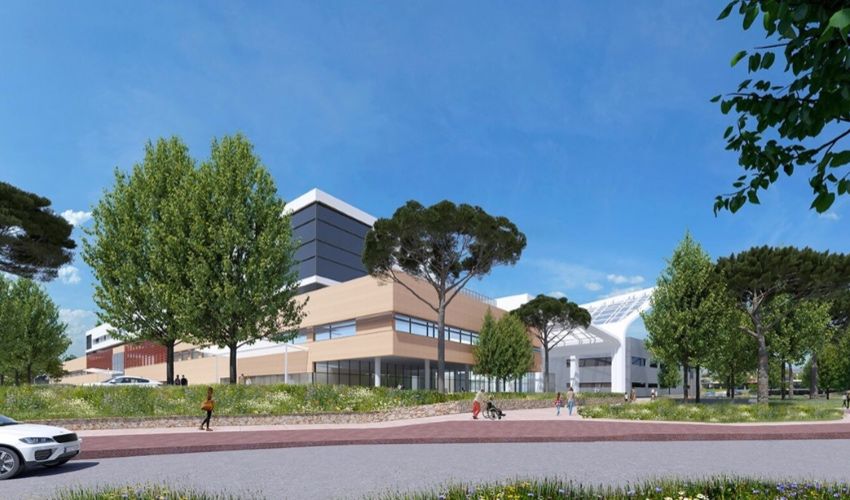

From the creation of a new “heritage gazebo” commemorating the Battle of Jersey, to a pledge to recycle 45% of waste generated in the construction process… here’s what we learnt from a deep dive into the new hospital planning application.
After the States Assembly agreed in October how to pay for the £804.5m ‘Our Hospital’ - by borrowing £756m from pension funds and other investors to be paid back over 40 years - a planning application was submitted last week.
Planning officers will now pore over the 300-plus documents, and the Environment Minister has also pledged to call in an independent inspector to assess the merits of the application.
Deputy John Young will make a final decision next June. Although he has the sole power to pass or reject it, his decision will be heavily influenced by the recommendations of the inspector, who will also invite submissions from the public as well as the Our Hospital project team.
But what does the application tells us about the project?
The new hospital at Overdale has been branded a ‘health campus’ as it incorporates numerous buildings, roads, car parks, gardens and other open spaces spread over 13 hectares, or about 18 football pitches.
The main rectangular 64,705m2 block (61,467m2 internal) will be five-storeys high, with an additional partial basement. A hospital storey is around 5m, thus making the building at least 25m high.
However, it is stepped: on the west side it drops to three storeys, and on the northern side it rises up to six storeys.
CLICK TO ENLARGE: A bird’s eye view of what goes where at the new ‘health campus’.
The Main Block, with five clinical levels and one for plant/air supply/administration, includes five 26-bed en-suite inpatient wards, a 30-bed private ward, a 12-bed obstetric ward, a 12-bed paediatric inpatient ward, 11 operating theatres, a 28-bed observation ward and a large internal boulevard.
To the north-west, on the site of the current Jersey Water headquarters, will be a two-storey 2,600 m2 Knowledge Centre and to the north-east, a single-storey 2,900 m2 Mental Health Centre.
Between the Mental Health Centre and Main Block will be a 300-space five-level multi-storey car park.
In total, there will be 550 car parking spaces, including 45 disabled spaces (12 for staff and 33 for patients) and a number of electric vehicle charging points. 175 spaces will be reserved for patients, although it is expected 50% of staff won’t drive to or from work.
The planning application says that there will be an extra 27% of public space across the site that isn’t there now. This includes a garden to the south-west, above the Val André valley, and land around the realigned Westmount Road.
This will include a new “heritage gazebo” and outlook over the town, to the south of the smoothed out hairpin. The lookout will incorporate interpretation signs relating to the Battle of Jersey and Major Francis Peirson, who marched from Mont ès Pendus (Westmount) towards the town with about 2,000 soldiers on 6 January 1781 to confront the French invasion.
CLICK TO ENLARGE: The Our Hospital team say there will be a net gain of more than 700 trees around the campus.
There will be a net gain of around 705 trees across the campus, according to the application. Around 155 trees will be removed during construction and 860 will be planted.
In particular, it says, there will be more trees planted around the realigned Westmount Road, along St. Aubin’s Road and around Victoria Park. Trees will also be planted in the People’s Park around a new play park, which will replace the existing one which has to move to accommodate the widened road, with its cycle path and pavement.
The distinctive oak tree on the southwest of the site will be retained and protected.
There will be “green roofs” which will reduce rainwater runoff as well as “natural drainage swales (open channels) around parking bays and additional planting”.
The buildings will have a required BREEAM target of ‘very good’ and an “aspirational target” of ‘excellent’.
Development seeks to achieve sustainability gains through “structural efficiency”, materials which are more durable and sustainable, the reuse of demolition materials where possible and a reduced carbon target.
These include:
roof terraces that will feature a “horizontal ecological transect of Jersey landscape features, including grassland, heath, scrub and woodland;”
green roofs on the northern and southern side of the hospital and Knowledge Centre, with photovoltaic panels installed on roof tops and set within a green wildflower meadow roof;
roof and door canopies across the hospital incorporating ‘greening’ where possible;
four internal courtyards with raised courtyards to provide soil depths for woodland ‘islands’ of greening;
a green trellising system around the multi-storey carpark to “significantly screen and humanise” the scale of the block, and climbing plants that can move up the screen and cascade down the sides of the carpark;
'green screening' and buffering around the site to protect nearby residents from light and noise;
an additional wildflower meadow planted in Val André;
animal tunnels laid beneath Westmount Road;
electric bike recharging points for staff.
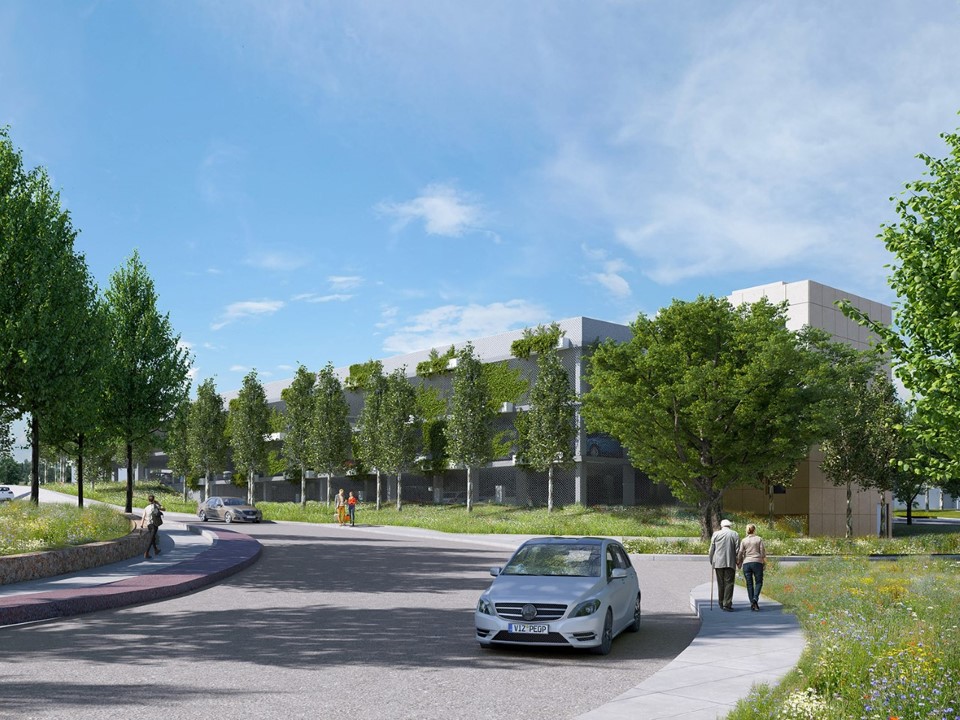
Pictured: The multi-storey car park will be screened by trees, says the planning application.
When it comes to the hospital’s compatibility with the Island’s Carbon Neutral Strategy, the project team say it will aim to use low-carbon materials and concrete, and reuse demolition waste wherever possible.
The target is to recycle 45% of waste, by value; all materials will have environmental management scheme certification (ISO) and be sourced ethically.
This will reduce the hospital’s ‘embodied carbon’, which refers to the amount of carbon dioxide that is emitted during construction and during future repairs, replacement and maintenance.
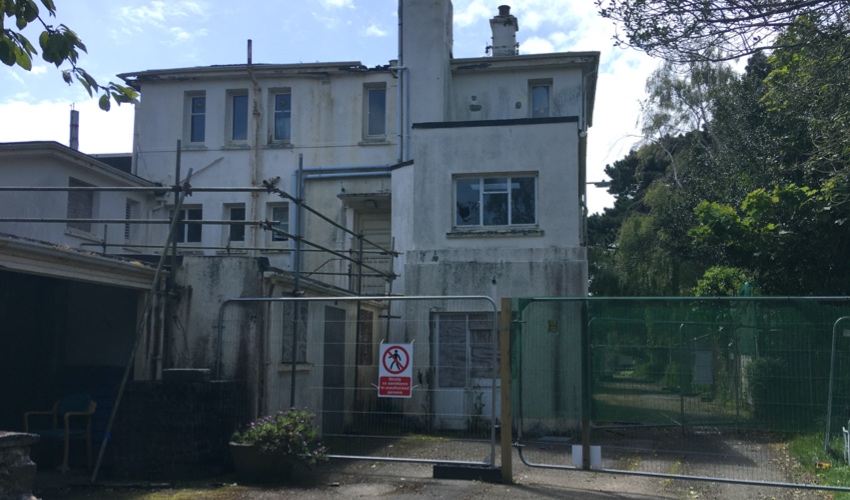
Pictured: All current buildings at Overdale will be demolished. The plan is to recycle 45% of all waste by value.
A document in the application says that “the project team will drive down the embodied carbon within the respective building designs. Consideration of industry best practice (kg/CO2e/m2) has been undertaken; however, there is currently no industry best-practice information for healthcare in the UK or internationally.
However, it adds: “The project team continue to review the impact of the design decisions with embodied carbon being a consideration in the decision-making process and report on the hospital’s embodied carbon as the design develops and identify opportunities to further reduce the impact in technical design and procurement.”
It adds that embodied carbon will be used as a metric and the “lowest carbon solution” will always be the priority.
The energy for running the hospital will be low-carbon as it will draw on the electricity grid, which primarily comes from nuclear and hydro power generation. There will also be photovoltaic panels on the roof and air source heat pumps will be installed in the three-storey Energy Centre, which is just to the north of the Main Block.
Surveys have found some protected species living in and around the site. Non-human inhabitants include hedgehogs, toads, pipistrelle bats, slowworms and birds. Further animal and floral surveys are recommended by consultants, including the installation of automated bat detectors.
One of the documents in the application states: “Some protected mammal, bird, reptile and amphibian are present, albeit in small numbers and with localised distributions that reflect the suitability of the different habitat types.
“Surveys indicate that some parts of the site are important for foraging and commuting bats in the local context."
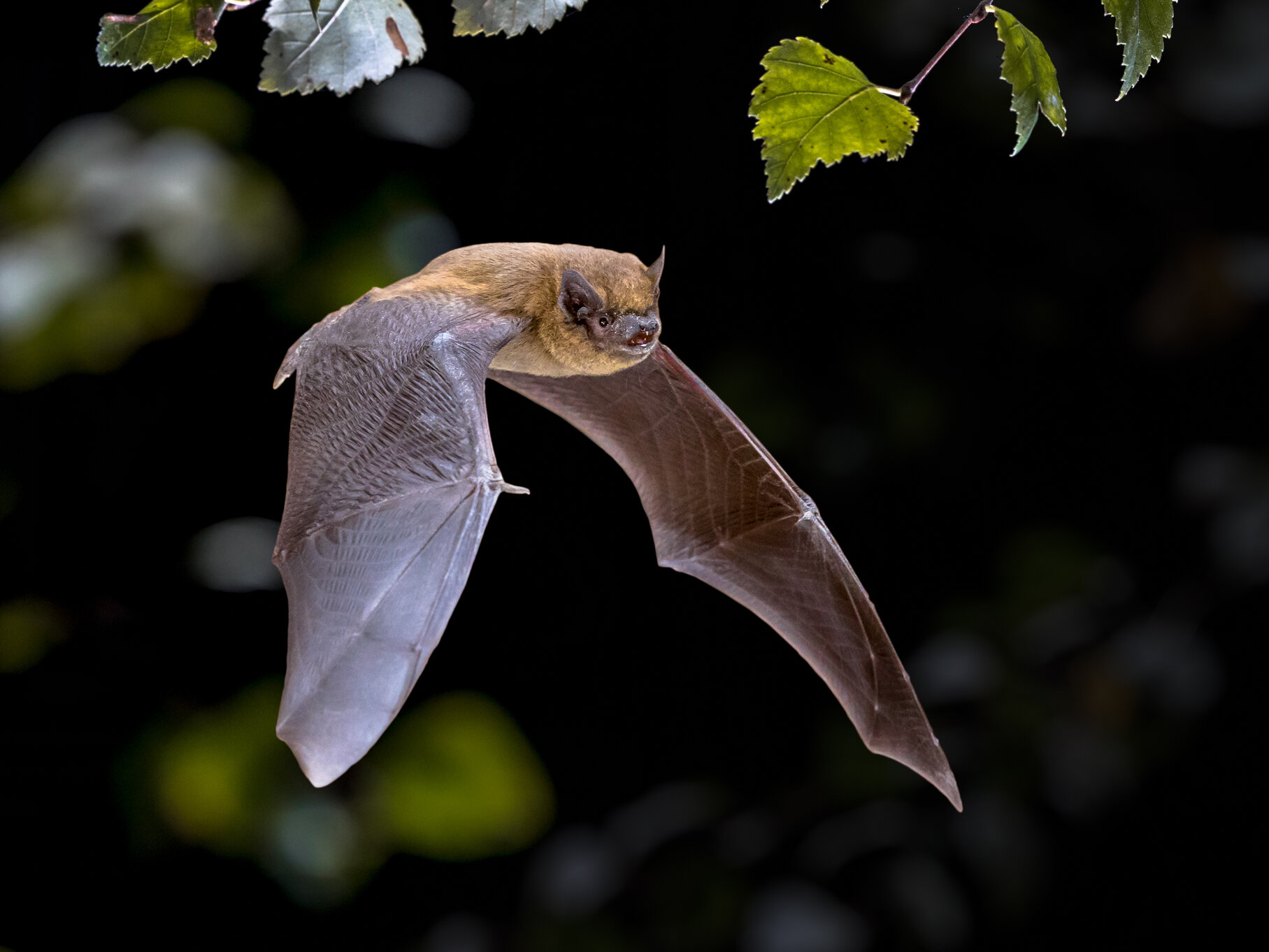
Pictured: Surveys have found that pipistrelle bats forage and fly in the area.
It continues: “In the absence of mitigation, the construction of Our Hospital has the potential to result in significant effects of ecology, primarily as a result of habitat loss and disturbance of species (as a result of noise, lighting etc).
“Measures are proposed that mitigate or compensate for the identified effects and taking these measures into account, the construction of the development is not likely to have a significant effect on any important ecological feature.
“Once operational, the Our Hospital Project is considered to have no significant effect on any important ecological features subject to the adoption of certain mitigation and compensation measures.”
All 22 buildings currently at Overdale Hospital will be demolished, as will the Grade 3-listed Thorpe Cottage between the current hospital and the Crematorium, and the Grade 4-listed property Briez Izel on the other side of Westmount Road, between fields H1550/A and H1551/2, which are currently farmed but will be become part of the campus.
A small disused chapel, the Jersey Water buildings, the Jersey Bowling Club off Westmount Road and other surrounding properties are also being bulldozed, if the planning application is approved.
The Our Hospital Project forms part of the draft Bridging Island Plan, which will define what is build and where over most of its building period, up to and including 2025.
Policy C13 of the plan states: “Proposals for the development of the new hospital within the designated ‘Our Hospital development site’ will be afforded the highest level of priority, and will be supported where:
“Proposals for the alternative use of land designated as part of the ‘Our Hospital development site’ will not be supported.
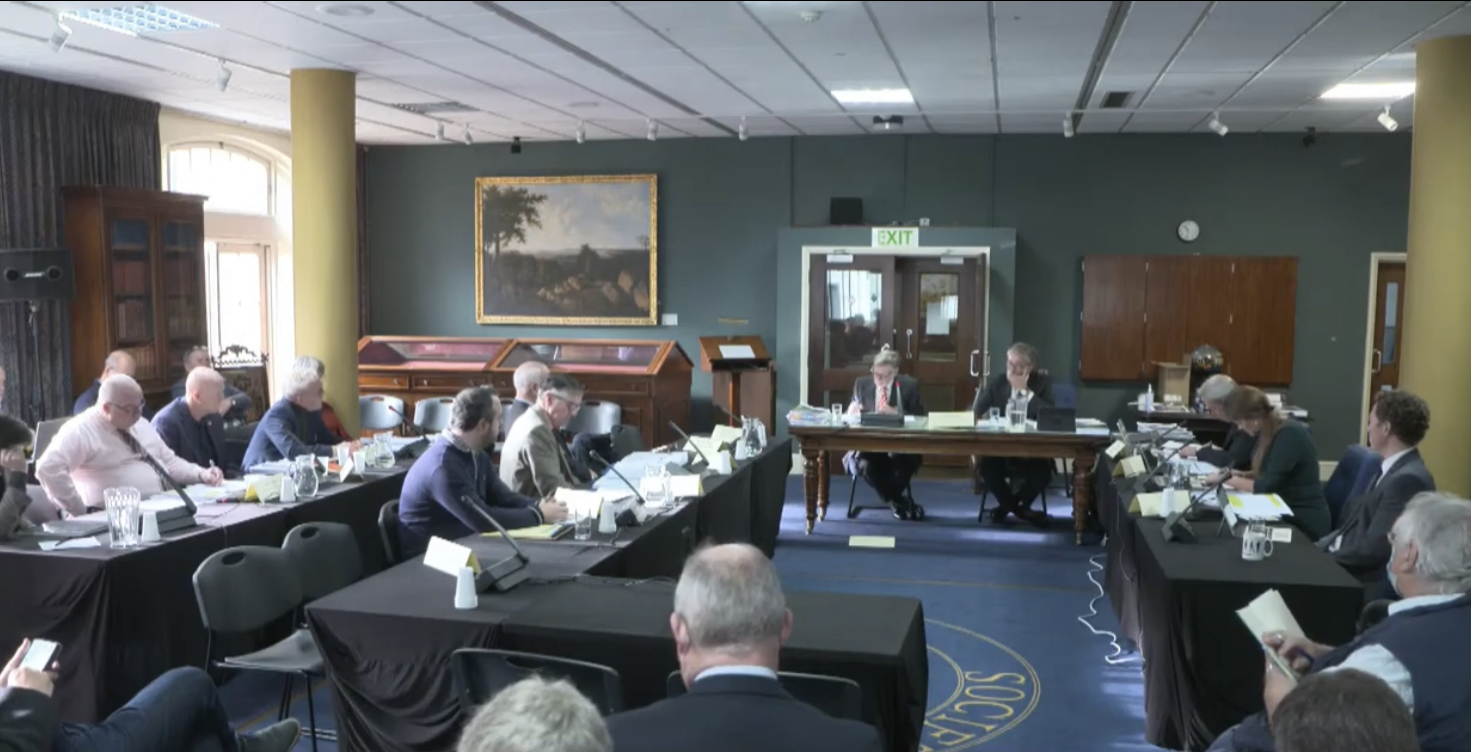
Pictured: The Our Hospital project will be discussed at a Bridging Island Plan public hearing this week.
“Proposals for associated infrastructure and relocation of existing services, where these are necessary to enable the delivery of the hospital but will be outside of the site approved by the States Assembly, may be considered as enabling and linked development and their delivery secured by planning obligation agreement, as appropriate and necessary.”
This policy is due to be reviewed by a independent planning inspectors at a public hearing on Tuesday afternoon.
Comments
Comments on this story express the views of the commentator only, not Bailiwick Publishing. We are unable to guarantee the accuracy of any of those comments.